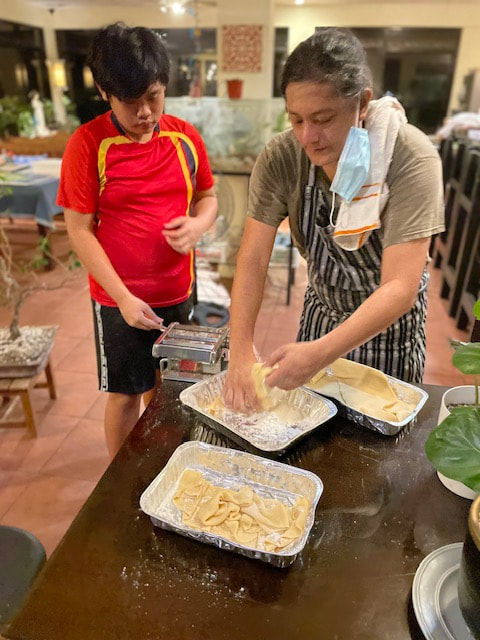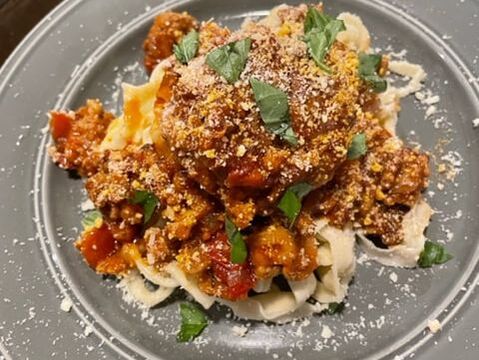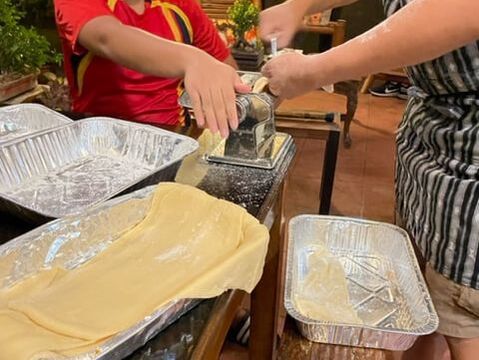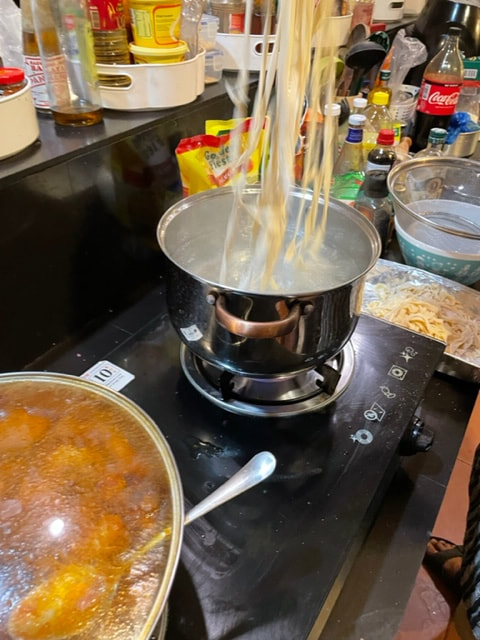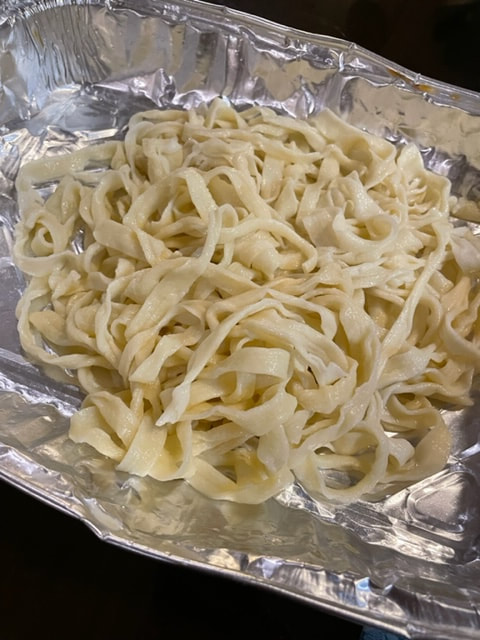Making Home-made Fresh Pasta
By Anton Viktor D. Landicho
Making fresh Pasta is a really great way to practice your culinary skills, impress your friends, and is a great bonding activity to do with your loved ones. It seems to be a common misconception that homemade pasta is a really hard thing to make, but it really isn’t. It’s so simple and so worth it to make, homemade pasta isn’t like just any other store-bought pasta that you can get. It’s a lot more absorbent, rubbery (in a good way), and flavourful but not only that, it’s also very enjoyable to make. I tried doing this with my friends and at first, they had absolutely no interest in helping me but when I forced them to help and see the pasta being rolled out they became so fascinated and wanted to try it out, even those who had never made homemade pasta in their life had a rather easy time rolling the pasta and turning it into fettuccine. So whenever I make pasta this is the recipe that works for me…
Making fresh Pasta is a really great way to practice your culinary skills, impress your friends, and is a great bonding activity to do with your loved ones. It seems to be a common misconception that homemade pasta is a really hard thing to make, but it really isn’t. It’s so simple and so worth it to make, homemade pasta isn’t like just any other store-bought pasta that you can get. It’s a lot more absorbent, rubbery (in a good way), and flavourful but not only that, it’s also very enjoyable to make. I tried doing this with my friends and at first, they had absolutely no interest in helping me but when I forced them to help and see the pasta being rolled out they became so fascinated and wanted to try it out, even those who had never made homemade pasta in their life had a rather easy time rolling the pasta and turning it into fettuccine. So whenever I make pasta this is the recipe that works for me…
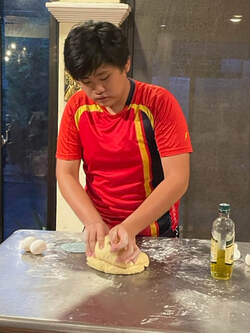
Ingredients:
200 grams of all-purpose flour or 00 flour
2 eggs
Extra virgin olive oil
Salt
Materials:
Cling wrap
Rolling pin
Pasta roller
Knife or bench scraper
Large pot
200 grams of all-purpose flour or 00 flour
2 eggs
Extra virgin olive oil
Salt
Materials:
Cling wrap
Rolling pin
Pasta roller
Knife or bench scraper
Large pot
|
Procedure:
1. So to start, get your flour and drop it into your countertop or your kneading board. And form a well with the flour using your hands (claw position) or a small bowl. 2. Drop the eggs in and start to beat them without ruining the well, add your Extra virgin olive oil (you can opt to put some salt in this stage but I don’t...), then slowly start incorporating the flour with the eggs. 3. Once the ingredients are well incorporated and you have your pasta dough this is when you start to knead. To Knead you simply need to grab your dough, fold it in on itself, and press forward. When it comes to kneading your dough you cannot be impatient with it, knead your dough until it’s bouncy(as in when you poke it the dough should “bounce” back – kind of like memory foam) and has a smooth surface, this might take a while… 4. Form a ball with your dough, wrap it with cling wrap to avoid having the dough dry out, and let it rest for an hour 5. Once rested you can cut the dough into four balls with a bench scraper or a knife 6. Put some flour on the dough so it doesn’t stick to your work surface then flatten the dough with your hands and a rolling pin until thin enough to put through the pasta roller 7. Roll the dough in the thickest setting, then fold, then roll in the same setting once more(make sure to flour the dough if it gets too sticky). At this stage its also best to start letting your water boil, don’t forget to salt it like the ocean! 8. After that roll through each setting at least once until you achieve your desired thickness 9. If the dough is too long you can cut it in half, flour the dough, then put it through the pasta cutter. If you don’t have a pasta cutter you can roll your sheet of pasta into a little stick and cut it into little noodles Without a pasta roller: Now if you don’t have a pasta roller, I have seen Erwan Eusssaff in his show FEATR simply making the dough and instead of using a pasta roller he just uses a rolling pin to make his pasta sheet. 10. Once you have your pasta noodles prepped you should be able to start boiling it, for an al dente all you need to do is wait for the pasta to start “floating” in the boiling water, this should only take around a minute or two. Strain your pasta and you’re done! We paired our fresh pasta with meatball spaghetti.
|
The harder part is making the dough and rolling out the pasta. Cooking the finished pasta is fast nd easy.
Cooking the fresh pasta is quick and easy. A minute or two really, or just until the pasta floats on top of the boiling water.Finished product! The shapes are a bit irregular but it was my first try and even though they were a bit wonky, they still tasted fantastic.
|


